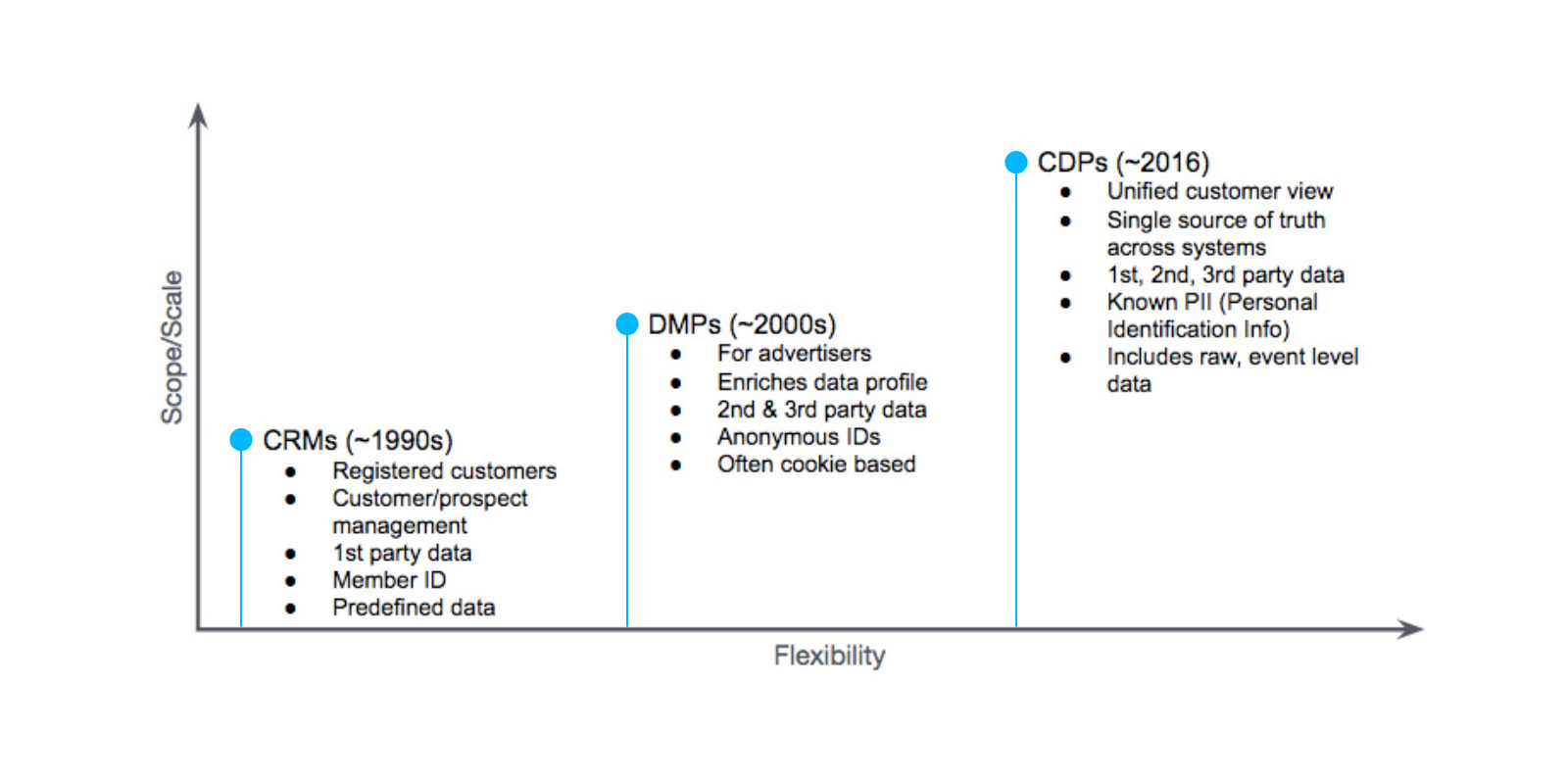The evolution of customer data management: DMP vs. CDP
Last updated March 13, 2018The question of how a customer data platform (CDP) is different from a data management platform (DMP) comes up regularly, leaving me to believe that the many blogs on this topic have missed the mark. Most blogs list the definitions or technical differences, which doesn’t really address why you should care. Then there’s the acronym issue: CRM, DMP, CDP, ABC. If you don’t live in the world of vendors working with these acronyms, keeping them all straight can be a challenge. Especially when the various CDP vendors define each in a slightly different way and give you the same benefit of a better understanding of your customer. Learn more about DMPs vs. CDPs in our recent webinar “Transforming Digital Advertising with the power of first party data“.
For the user of the CDP or DMP, it’s about two perspectives: Scope and scale of the data and the flexibility to collect, analyze and utilize that data. For a clearer understanding, let’s look at how these systems evolved on our quest to leverage customer data.

I find it helpful to start with the customer relationship management (CRM) systems. CRMs came into being for the purpose of collecting lead, account and customer information. CRMs collect clearly defined details for 1st party data (your data) about known customers and prospects. With the development and pervasiveness of the internet, DMPs arrived for use in advertising. DMPs are generally cookie-based and use anonymous IDs for the profiles. Even as capabilities for DMPs increase, they are not able to create a single view of your prospects and customers across systems (see our DMP platform list here).
After a couple of decades of companies adding CRMs and DMPs to their marketing arsenal, they now have data silos everywhere. The explosion of data compounds the problem. Many companies have custom loyalty applications, point of sales systems and Internet of Things (IoT) devices. Today the customer expects companies to have a handle on all this data and to treat them as individuals based on all this data being collected. As the next solution in the data evolution, enter the enterprise CDP.
The enterprise CDP brings together all of your data sources, including CRMs, DMPs, loyalty applications, point of sale systems and IoT devices for a single, actionable view of your customer. A CDP unites customer profiles into a single personal identification number (PII). A CDP has the flexibility to collect raw, event level data without the need to predefine fields. This allows you to later query on data that you didn’t predefine. In addition, a CDP can ingest 1st party, 2nd party, 3rd party and zero party data.
There are more complicated definitions out there comparing features and capabilities. However as the technological features of each system expand, the differences become blurred. For clarification look to the original purpose and intent of the base data platform. An enterprise CDP was developed purposefully to deliver a single view of your customer. Data from CRMs and DMPs become unified by an enterprise CDP.
More important than understanding the differences between these systems, check out how our CDP customers are using an enterprise CDP today. Recently we helped one of our enterprise customers by bringing together data from 21 sources, including 9 CRM systems, and creating a single profile from 8 different customer IDs. Learn about the situation with a Gartner CDP Magic Quadrant here. Get more examples of CDP case studies here.